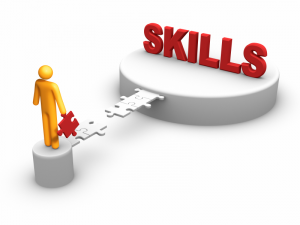How to deliver your project and present to an audience is an important step for a successful project. I will never forget the 2007 iPhone presentation which Steve Jobs introduced his new product in a simple and easy way. A successful presentation can make a complex product be easy to accept by an audience. There are some issues that you need to be aware when you want to deliver a project and present to your audience.
Delivering a project on time, within budget, and with functionality required are the basic requirements, yet the most important thing is that you must let your audiences know what and how your team did in the project. There are some risks when you deliver your project into the market. A good project is the key to succeed, but at first you need to let your audience know how good your project is. Different audience may have different desire for the project, and you can make different plan such presentation or training for each type of audiences. For example, when we delivered our project to our client, we gave a workshop to the client about how to use and manage the Facebook apps. She felt very helpful and gave a good feedback. However, when facing a multi-level audience, it will be more challenge. Each level audience has different knowledge about the project. Thus, you have to make your presentation be easy enough and accepted by different audience.
Something is helpful when you prepare for your presentation.
- The content of your presentation is really important. It should be something that the audience is interested. Some difficult technical issues should not be in the presentation since they are only been care by technical staffs. Thus, figure out the special feature and important property of your project, and show how they will get the benefits from the project.
- Keep the presentation simple and easy to accept by all audiences. The principle “Keep it simple, Stupid!” should be always used to prepare a presentation. Avoid some difficult technical terms; use less text and more visual. According to the research of professor Albert Mehrabian, only 7 percent of text is accepted by an audience in a presentation, while visual is 55 percent (as cited in Presentation Magazine, 2009). Some visual aids such as PowerPoint, slides, and video are very helpful to improve your presentation. According the research of University of Alabama School of Medicine in 2005, students can remember more information and in longer time if verbal and visual are used together. We can see the data below (Figure 2).
- Show your passion about the project. When you sell something to an audience, it must be the best in your mind. Thus, expressing your passion with the project is the great way to arouse yours audience’s feelings. If you are not excited about your project, nobody else will be.
- Practice, practice, and practice. Nobody will be born in presenter. If you want to sell your project successfully, you have to practice more. As Carmine Gallo (2012) points out, “Hours and hours of practice made Jobs look polished, casual, and effortless.”
When you delivery your project and present to audiences, you need to plan your presentation carefully. Just as Steve Jobs, a successful presentation is an effective way to introduce your project to audiences, and it can also improve your brand in their minds.
References
Presentation Magazine. (2009). Presentation Skills. Retrieved from http://www.presentationmagazine.com/presentation-skills-1-use-visual-aids-7320.htm.
University of Alabama School of Medicine. (2005). Successfully Using Visual Aids
in Your Presentation. Retrieved from http://www.uab.edu/uasomume/fd2/visuals/page2.htm.
Gallo, C. (2012). 11 Presentation Lessons You Can Still Learn From Steve Jobs. Retrieved from http://www.forbes.com/sites/carminegallo/2012/10/04/11-presentation-lessons-you-can-still-learn-from-steve-jobs/2/.
Figure 1. Retrieved from http://www.alphagraphics.com/centers/nottingham-uk007/Presentation_Materials.


















